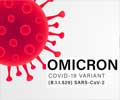Can Chewing Gum Protect Against COVID-19? COVID-19 virus particles attached themselves to the chewing gum, which reduced the viral load to undetectable levels.
- COVID-19 virus first infects cells in the throat and so the mouth is a key reservoir of the virus
- Inactivating that virus in the mouth and saliva could reduce viral load and stops the infection spread
- Based on these facts, scientists developed new chewing gum that might join face masks and hand sanitizers in the anti-COVID arsenal
Developing Chewing Gum that Could Reduce COVID-19 Transmission
In test-tube experiments using saliva from individuals infected with the Delta or Omicron variants, the virus particles attached themselves to the ACE2 "receptors" in the chewing gum and the viral load fell to undetectable levels.A second experimental chewing gum made with bean powder instead of lettuce cells not only traps SARS-CoV-2 particles in lab experiments but also influenza strains, other coronaviruses that cause common colds, and potentially other oral viruses such as human papillomavirus and herpesvirus.
“Because the nasal transmission is negligible when compared to oral transmission. Chewing ACE2 gum and swallowing ACE2 protein should minimize infection, protect COVID-19 patients and prevent transmission,” said research leader Dr. Henry Daniell of the School of Dental Medicine at the University of Pennsylvania.
The angiotensin-converting enzyme 2 (ACE2) protein, found on the surface of many human cells, acts as a gateway for the virus to infect them. If delivered to the mouth by chewing gum, however, ACE2 could instead trap the virus by binding to the spike protein it uses to infect cells.
The protein in the gum could also bind to receptors on cells themselves, thereby blocking infection sites. This combination could prevent viruses from infecting cells in the oral cavity.
The new study contends that inactivating the virus in the mouth’s mucous membranes and saliva could reduce infection in the adjoining nasopharyngeal area, too. If additional research bears out these findings, the gum might join face masks and hand sanitizers in the anti-COVID arsenal.
How does Chewing Gum Reduce the COVID-19 Virus in Saliva?
To study this strategy, a team led by University of Pennsylvania pharmaceutical researcher Henry Daniell genetically modified lettuce plants to produce a soluble form of ACE2 (which has been proved safe at high dosages in animals). The lettuce was then powdered and blended with cinnamon-flavored chewing gum.The amount of a similar stand-in virus inside unmodified monkey cells also dropped by 85 percent when exposed to the protein. Adding the gum to saliva samples and swabs of nasal and throat fluid from a handful of people infected with SARS-CoV-2 was associated with a more than 95 percent reduction in the virus amount.
The research team is awaiting approval from the U.S. Food and Drug Administration to test the gum’s effectiveness in humans. Testing with a chewing machine suggests the protein would be released over 10 minutes, and estimates protection would last four hours. They are also testing the chewing-gum approach against influenza.
Even if the gum does not fully defend a chewer against infection, it might reduce spread by cutting down the amount of virus in an infected person’s mouth and thus reducing how much is available for transmission.
References:
- https://dnascience.plos.org/2022/06/02/can-chewing-gum-protect-against-covid/
- https://biologicalsciences.leeds.ac.uk/biological-sciences/news/article/330/could-a-chewing-gum-really-reduce-the-spread-of-covid-19
Source-Medindia
















